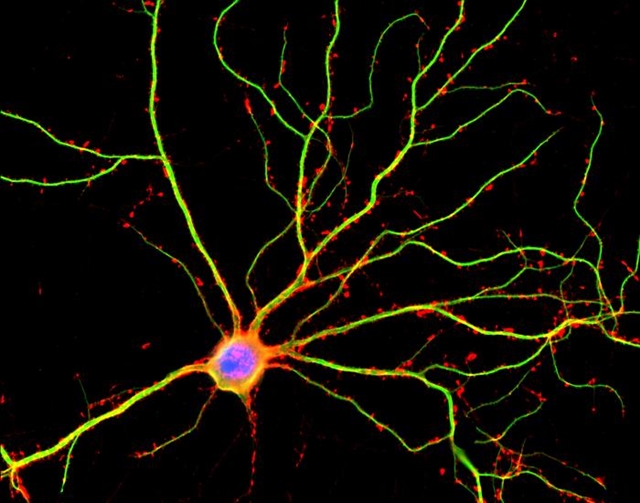
(National Institute of General Medical Sciences, NIH)
9 Oct. 2018. An implanted electronic device is shown in tests with lab rats to help heal peripheral nerve injuries, after which the device degrades and is absorbed into the body. A team from Washington University in St. Louis, Northwestern University, and institutions in Korea reports these findings in yesterday’s issue of the journal Nature Medicine (paid subscription required).
Researchers led by Washington University neurosurgeon W. Zachary Ray and Northwestern University bioengineering and materials science professor John Rogers are seeking better methods to heal injuries to nerves in the hands, arms, legs, and feet which, according to data cited by the authors, represent 2 to 5 percent of all trauma cases. In addition, these peripheral nerve injuries, when serious, often do not heal completely, leaving individuals with incomplete motor and sensory functions.
When surgery is required to repair peripheral nerve injuries, physicians sometimes will add electronic stimulation to aid the healing process during the procedure, but that can be done while the surgery is underway. Electronic stimulation promotes release of growth factor proteins, which help damaged nerve cells regrow faster and more completely. “We know that electrical stimulation during surgery helps, but once the surgery is over, the window for intervening is closed,” says Ray in a joint statement. “With this device, we’ve shown that electrical stimulation given on a scheduled basis can further enhance nerve recovery.”
The device is a paper-thin, flexible electronic circuit made with biocompatible materials designed to work in the body for limited periods of time. Power is provided wirelessly from a nearby source in a magnetic field, much like non-contact charging stations for smartphones. The device wraps around the injured nerve, with circuits that absorb then convert the power into electronic signals for stimulating the damaged nerve cells. After its operational lifetime, the materials break down and are absorbed into the body.
The researchers tested the device in lab rats with damaged sciatic nerves that run through the animals’ backs and limbs. The team provided electronic stimulation through the implanted devices for an hour a day for periods of 1, 3, and 6 days, and tracked recovery of the injuries for 10 weeks. The results show electronic stimulation helps the injured animals develop more muscle mass and strength, compared to animals receiving no stimulation at all. And in general, the more days that stimulation is provided, the more nerve signaling and muscle strength improves. In addition, engineers on the team found they could lengthen the operational lifetime of the devices by thickening and changing the composition of the materials.
“These platforms represent the first examples of a bioresorbable electronic medicine,” says Rogers, “engineered systems that provide active, therapeutic function in a programmable, dosed format and then naturally disappear into the body, without a trace.” The following video demonstrates the workings of the device and its ability to degrade and be absorbed.
More from Science & Enterprise:
- Start-Up to Tackle Neurodegenerative Diseases, Raises $31 Million
- Institute, Company Studying Neuro Disease Proteins
- Pharma, Biotech Partner on Neuro Therapies in $1.1B Deal
- Institute, Company Partner on Implanted Neuro Device
- Neuro Disease Start-Up Gains $30M in Early Funds
* * *

 RSS - Posts
RSS - Posts
[…] Electro-Pharmaceutical Device Tested to Heal Nerve Injuries […]